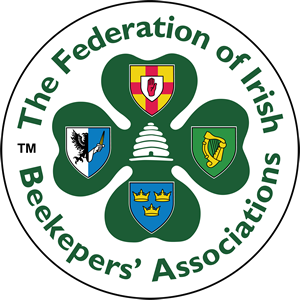An Invasive Species
It all started in 2004, when a mated Asian Hornet queen accidentally escaped its native range in Southeast Asia and arrived by freight in France.
Without natural enemies, its offspring dispersed fast in Western Europe, and it has now become established and widespread in several European countries.
The Asian Hornet is included in the list of Invasive Alien Species of Union Concern (Regulation (EU) 2016/1141) (It is also mentioned in the Windsor Framework – UK-NI).
Under this legal framework, it is a notifiable pest in Member States (and UK-NI).
The Asian hornet, like other invasive species, can become a major pest when introduced outside its native range. This pest can cause damage to the new ecosystem and habitat.
- Asian hornets are predators, and their impact is on insect pollinators and honeybee populations.
- Asian hornets, therefore, negatively impact certain agricultural crops and fruits.
- When Asian hornets defend themselves with their stingers, they can harm humans and cause allergic reactions.
Ireland
- Ireland is under threat of being invaded by the Asian Hornet.
- There are many gateways through international trade or dispersal of hornets.
- Please check cars on return from continental Europe and Great Britain.
- 2021 (May) a single (dying) Asian Hornet has been reported.
- 2025 (August) two sightings (July) were reported, one secondary nest was found.
The hornet’s appearance
Asian hornets look like giant wasps (25 – 30 mm) compared to German wasps (12-18 mm). They distinguish themselves by their size, yellow-tipped legs, orange faces with large dark eyes, black thoraxes, large wings and orange band near the end of the abdomen
Embryonic Nests
In spring, when the mated queen emerges from hibernation, this foundress queen builds in a sheltered place the embryonic nest, an open ‘paper’ nest with few cells around a petiole and starts laying eggs.
The foundress queen initially takes care of the brood by keeping it warm, feeding the larvae and defending this nest.
Primary Nests
Later, brood care is taken over by sterile female worker hornets when sufficient in number.
They forage for food and water and build out the embryonic nest, turning it into a small, spherical primary nest with the entrance at the base. It resembles a wasp nest. The size of the early raised hornets is smaller compared to hornets raised in secondary nests.
Translocation to Secondary Nests
As the colony grows larger, with several hundred workers, hornets tend to build a second nest (70%), and the queen moves to the new nest site.
During a transitional period, some hornet workers return to the primary nest to feed the larvae and newly emerged hornets.
Over time, the primary nest will be abandoned, disintegrate rapidly and may be overtaken by other species such as bumble bee wax moths or scavengers.
Secondary Nests
The secondary nest, initially small, rapidly enlarges with the expansion of the colony (to 60-90 cm or more), is often found at high locations (10 m above the ground or higher), but can also be found in bushes, hedges and under the ground. The large roundish nests contain shell-shaped envelopes, with a variation in colour with the nest opening halfway and well guarded.
The secondary nests are home to thousands of hornets. In these nests, the queen starts to lay eggs in August, emerging into a few hundred reproductive males and females (gynes).
The emerged reproductive hornets mate and become future queens
search for shelter to hibernate.
As the year draws to a close and food becomes scarce, the colony sizes decline, and the nests will be abandoned and disintegrate.
A Potential Threat to Biodiversity
The diet of hornets is protein-rich, mainly to feed their larvae, but also to maintain their own body functions. Adult hornets’ diet includes further nectar and water.
One hornet colony consumes about 12,5 kg of insects during one season, mainly to feed their larvae. Asian hornets hunt on various insect pollinators such as honeybees, hoverflies, solitary bees, wasps, bumblebees, beetles, butterflies, but spiders also appear on their menu. Other sources of protein include meat, fish, cadavers, and pet food.
A Potential Threat to Honey Bees
Hornets tend to hover around hive entrances, grabbing foraging bees, which, on return to the hives, are a good source of protein and nectar.
Western European honey bees do not yet have a well-developed defence mechanism compared to bees in Asia. Western European honeybees defend their nest, resulting in reduced foraging activities. Consequently, the reduced food sources result in the dwindling and collapse of colonies.
A Potential Threat to Biodiversity
- Average weight of hornets 237 mg (0.237 kg)
- Average weight of foraging bees 116mg.
- Average weight of 11 thoraxes 30 mg.
- 1 hornet 237 mg lift 1 bee 116 mg – half its weight, to a place where it removes head appendages and abdomen to return to its nest with a 30 mg “meat” ball.
- Compared to 1 person of 80 kg, initially running with 40 kg and then 10 kg.
Where to Report a Sighting of Any Asian Hornet of a Nest
For safety reasons, do not interfere under any circumstances with (suspect) Asian Hornets or their nests.
Hornets defend by stinging which may cause stings allergic reactions similar to bees or wasp stings.
- Take a picture of the hornet or nest
- Remember the exact location, and
- Report to www.biodiversityireland.ie
- On the home page:
- select “start recording”
- select “invasive species” and
- report the finding, and
- Contact Details
-> Report without undue delay any sightings of hornets before they will settle.
-> Once settled, beekeepers need to adapt the management of bees.
Confused Species
The Asian Hornet is sometimes confused with other species, most commonly with the giant woodwasp and the common wasp.
Please familiarise yourself with the appearance of hornets and of the most commonly confused native species, as in the leaflet distributed by NPWS.








